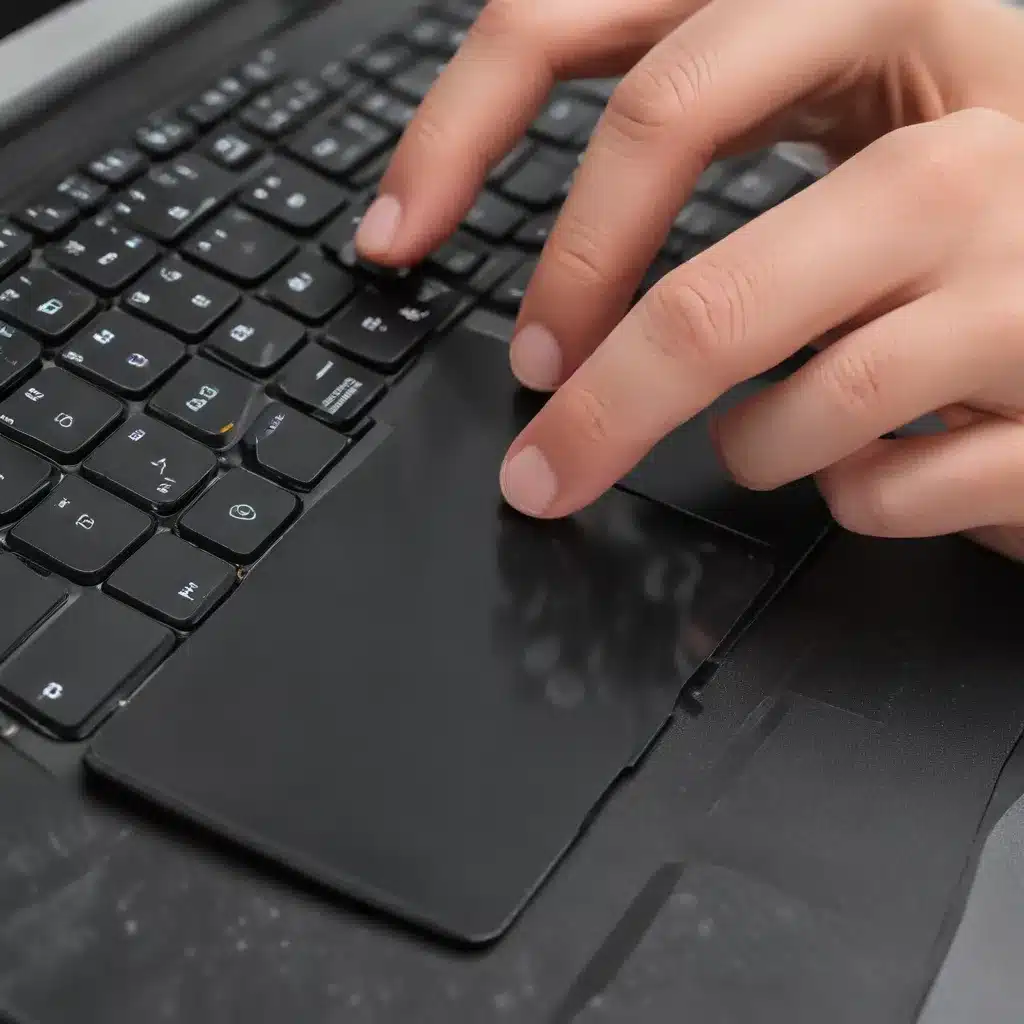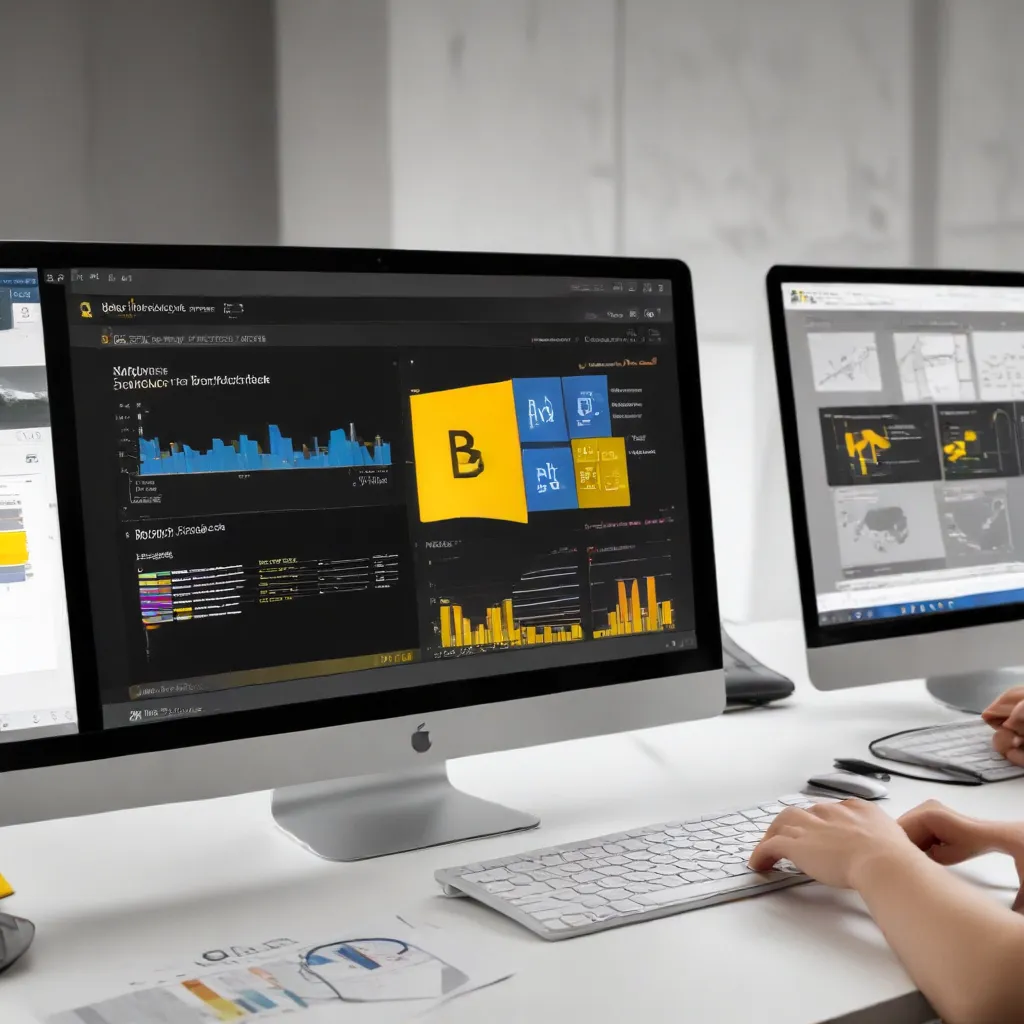
As an experienced IT technician, I’ve seen my fair share of laptop input device issues over the years. From faulty touchpads and temperamental trackpads to unreliable pointing devices, these problems can be a real nuisance, hindering our ability to navigate and interact with our beloved laptops. But fear not, my fellow tech enthusiasts – with a bit of know-how, we can get those unresponsive input devices back in tip-top shape.
Hardware Components
Laptop Touchpad
The touchpad, also known as a trackpad, is a common input device found on laptops and some desktop computers. It uses capacitive sensing to detect the movement of your finger, allowing you to control the on-screen cursor and perform various gestures. These touchpads are often integrated directly into the laptop’s chassis, providing a sleek and compact solution for navigating your device.
Laptop Trackpad
On the other hand, the trackpad, primarily found on Apple’s MacBook lineup, is a more advanced input device. Utilizing a larger, glass-based surface, trackpads offer a more responsive and precise experience, with support for a wide range of multi-touch gestures. These trackpads are designed to provide a seamless and intuitive interface for MacOS users.
Pointing Devices
Beyond the built-in touchpad or trackpad, laptops may also support the use of external pointing devices, such as USB or Bluetooth mice. These can be a useful alternative when the primary input device is not functioning as expected.
Troubleshooting Laptop Input Devices
Identifying Unresponsive Issues
When dealing with an unresponsive touchpad or trackpad, you might notice a few telltale signs. The cursor may move erratically or fail to respond altogether, making it difficult to navigate your laptop. In some cases, the touchpad or trackpad might even stop working entirely, leaving you reliant on an external mouse.
Potential Causes of Unresponsiveness
The causes of an unresponsive input device can vary, but they often stem from a combination of software and hardware factors. Outdated or corrupted drivers, hardware malfunctions, and even accumulated dirt or debris can all contribute to these frustrating issues.
Troubleshooting Techniques
To get your laptop’s input device back in working order, we’ll need to employ a range of troubleshooting techniques. This may involve exploring software-based solutions, such as updating drivers or adjusting system settings, as well as hardware-based approaches, like cleaning the touchpad or checking for physical damage.
Operating System Considerations
Windows Touchpad Settings
For Windows users, the touchpad settings can be found in the “Bluetooth & devices” section of the Settings app. Here, you can enable or disable the touchpad, adjust its sensitivity, and even configure various gestures to suit your preferences.
macOS Trackpad Preferences
On the other hand, Mac users can access their trackpad settings through the “System Preferences” menu. The “Trackpad” pane allows you to customize the responsiveness, enable or disable specific gestures, and fine-tune the overall experience to your liking.
Linux Input Device Configuration
Linux users may need to delve a bit deeper into their system settings to manage their input devices. Depending on the distribution, the touchpad or trackpad settings can be accessed through various configuration tools or desktop environment-specific settings panels.
Fixing Unresponsive Touchpads and Trackpads
Software-based Troubleshooting
One of the first steps in resolving an unresponsive input device is to ensure that the necessary drivers are up-to-date. Outdated or corrupted drivers can often be the culprit, so it’s worth checking for any available updates through the manufacturer’s website or your operating system’s built-in update mechanisms.
Hardware-based Troubleshooting
In some cases, the issue may be hardware-related, such as a buildup of dirt or debris on the touchpad or trackpad surface. Gently cleaning the input device with a microfiber cloth and a small amount of isopropyl alcohol can often help restore its responsiveness.
Replacement Options
If all else fails, and the touchpad or trackpad remains unresponsive despite your best efforts, it may be time to consider a replacement. Consult with your laptop’s manufacturer or a reputable repair service to determine the feasibility and cost of replacing the faulty input device.
Device Drivers and Updates
Touchpad/Trackpad Driver Management
Ensuring that you have the correct and up-to-date drivers installed for your touchpad or trackpad is crucial for maintaining optimal performance and responsiveness. Keep an eye out for any driver-related error messages or inconsistencies in your device manager, and don’t hesitate to update or reinstall the drivers as needed.
Updating Drivers for Improved Responsiveness
Regularly checking for and installing the latest driver updates can often resolve issues with unresponsive input devices. Manufacturers are constantly working to improve the stability and functionality of their touchpad and trackpad drivers, so staying on top of these updates can make a significant difference.
Compatibility Considerations
When updating or replacing drivers, be mindful of compatibility with your specific laptop model and operating system. Choosing the wrong driver can lead to further issues, so always double-check the manufacturer’s recommendations and specifications.
Gestures and Customization
Multi-touch Gesture Support
Modern touchpads and trackpads often support a wide range of multi-touch gestures, such as pinch-to-zoom, two-finger scrolling, and three-finger swipes. Ensuring that these gestures are properly configured and enabled can enhance your overall user experience and productivity.
Customizing Touchpad/Trackpad Behavior
Most operating systems allow you to tailor the behavior of your input devices to your personal preferences. Whether it’s adjusting the cursor speed, enabling or disabling specific gestures, or fine-tuning the responsiveness, taking the time to customize your settings can make a world of difference.
User Preference Optimization
Ultimately, the goal is to find the right balance of settings that provide you with the most comfortable and efficient input experience. Experiment with the various options and customizations until you’ve found the sweet spot that suits your needs and workflow.
Power Management and Battery Life
Power Settings and Touchpad Performance
The power management settings on your laptop can also have an impact on the responsiveness of your touchpad or trackpad. Ensure that your system is not set to a power-saving mode that may inadvertently limit the input device’s performance.
Battery Drain and Touchpad Sensitivity
In some cases, a drained or aging battery can cause the touchpad or trackpad to become less responsive or sensitive. Consider checking your battery health and, if necessary, replacing the battery to see if that resolves any input device issues.
Thermal Considerations
Excessive heat buildup within your laptop can also contribute to input device problems. Make sure your device’s vents are unobstructed and that the cooling system is functioning properly to maintain optimal operating temperatures.
Ergonomics and Accessibility
Touchpad Positioning and Comfort
The placement and ergonomics of your laptop’s touchpad or trackpad can also impact its usability. Ensure that the input device is positioned in a comfortable and accessible location, allowing you to navigate with ease.
Alternative Pointing Devices
If the built-in touchpad or trackpad continues to be a source of frustration, consider exploring alternative pointing devices, such as USB or Bluetooth mice. These external input options can provide a more reliable and customizable experience.
Accessibility Features and Settings
Many operating systems offer a range of accessibility features and settings specifically designed to enhance the user experience for individuals with specific needs. Familiarize yourself with these options, as they may help address any input device-related challenges you’re facing.
Remember, as with any tech-related issue, a little troubleshooting and persistence can go a long way in resolving those pesky touchpad and trackpad problems. By leveraging the knowledge and techniques outlined in this article, you’ll be well on your way to restoring the smooth, responsive input experience you deserve. Happy computing, my fellow tech enthusiasts!
And if you’re ever in the Manchester area and need some expert IT assistance, be sure to stop by the IT Fix blog at https://itfix.org.uk/computer-repair/ – we’d be more than happy to lend a hand.












